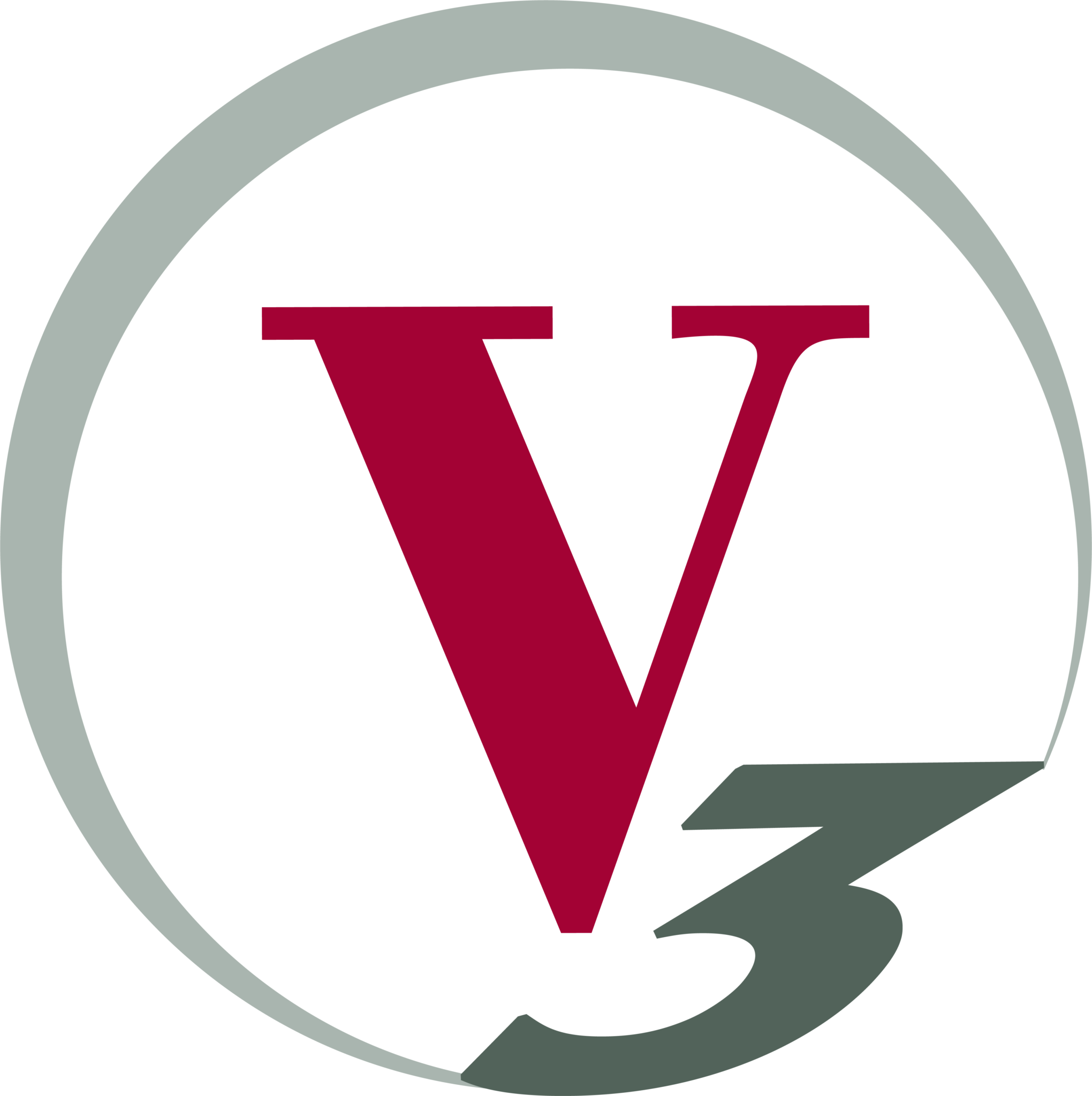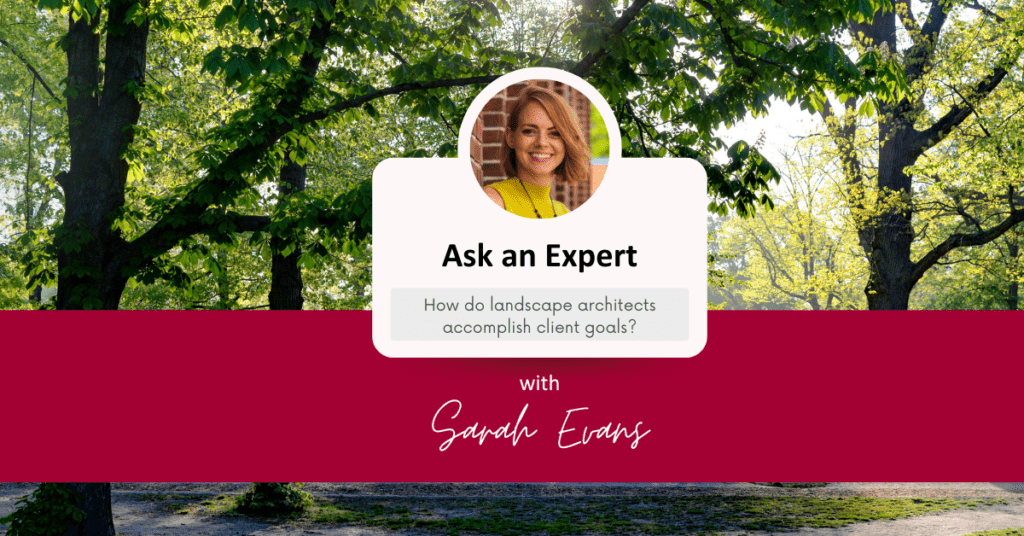Our landscape architecture clients often ask us, “How will you accomplish our goals on this site?” We interviewed our Indianapolis Landscape Architecture Group Leader—Sarah Evans, PLA, ASLA—to learn how V3’s multidisciplinary approach incorporates client goals, community needs, and detailed site evaluation to create holistic plans for innovative and meaningful spaces.
Laying the groundwork
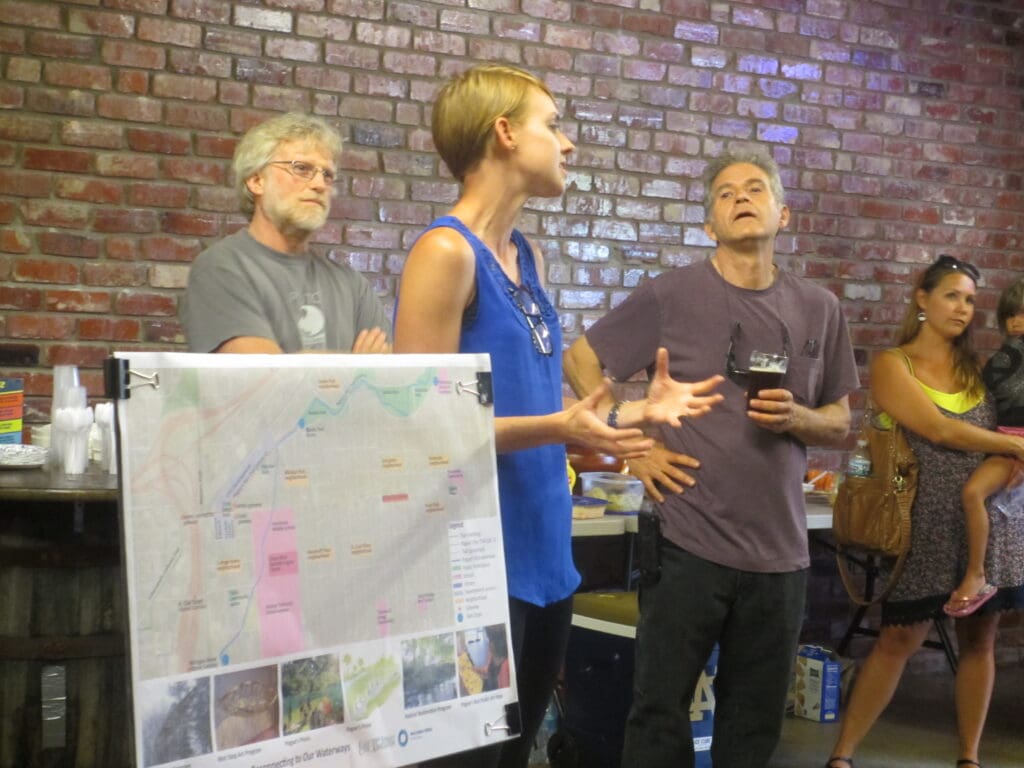
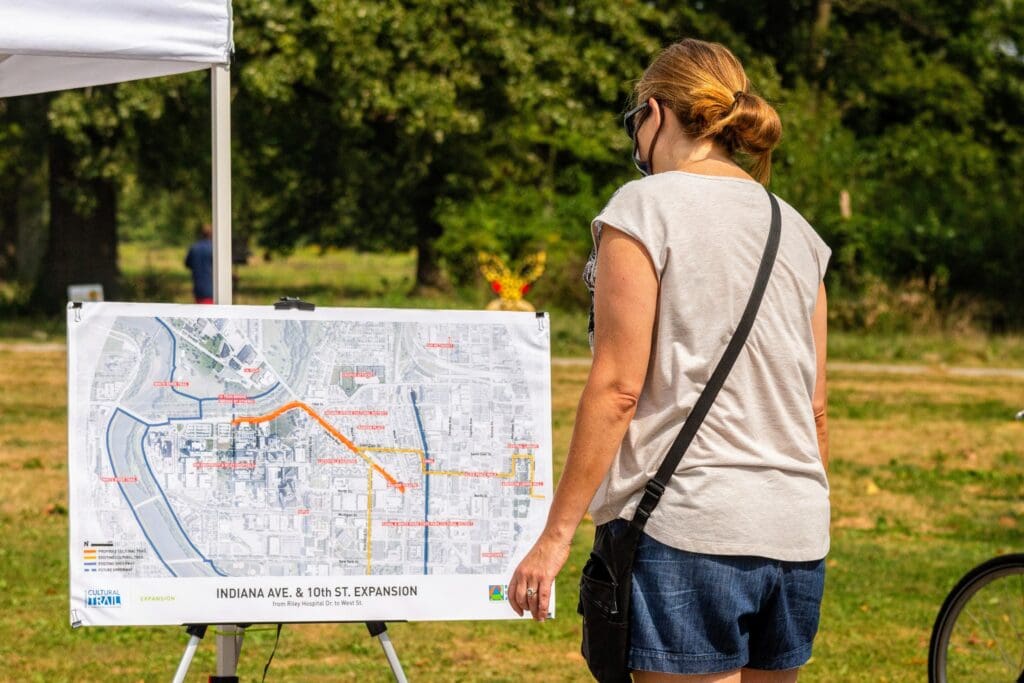
Our design process begins with client and community engagement. Client focus is one of our core values, meaning that our initial discussions always revolve around the goals and vision that spurred the project’s initial conception. Awareness of the project’s history, requirements, and budget lays the foundation for what’s to come.
As client goals are defined, we deepen our knowledge of the site and its context within a place by directly engaging with the community. Many of our projects include robust public engagement that gets woven throughout development. We are intentional about creating an inclusive process as part of a project, and many times that includes partnering with community organizations and leaders who have existing relationships with the community. Our most important job is to listen to community needs so that we can lend our expertise to create meaningful designs that will be successful long-term.
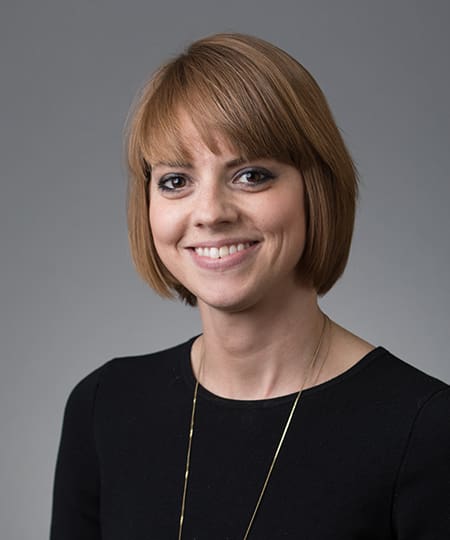
“Because so many landscape architecture projects are public facing, we need to engage with and build trust among residents and local experts. We have a big toolbox for connecting with people, but many of the best ideas we employ come from our community partners. Utilizing the project’s site to meet with community and make the process fun for participants are ways we create value for our clients who also are looking to capture public input. Community engagement is vital to our process.”
Sarah Evans, PLA, ASLA
During this initial phase, we also collect data to better understand the site’s context. We research historical information to understand how humans have previously used the site and how it fits within the social fabric of a community. We don’t want to duplicate or compete with other plans on or near the site, so our multidisciplinary team of surveyors, scientists, and planners work together to uncover as much information as possible.
This data collection process includes:
- Detailed site surveys using the latest technology
- Environmental assessment of any possible contaminants that will need to be remediated
- Research of local building codes and past/current plans on or around the site
Building the vision
With all this information in hand, our landscape architects can now develop a conceptual design that ties together the vision with the realities of the site.
This schematic framework includes:
- Site opportunities that show us where programmatic elements can go, such as new amenities, structures, connectivity patterns, and other vital elements.
- Site constraints that show us where things cannot go based on existing information such as utilities, traffic patterns, hazards, buildings, and other structures.
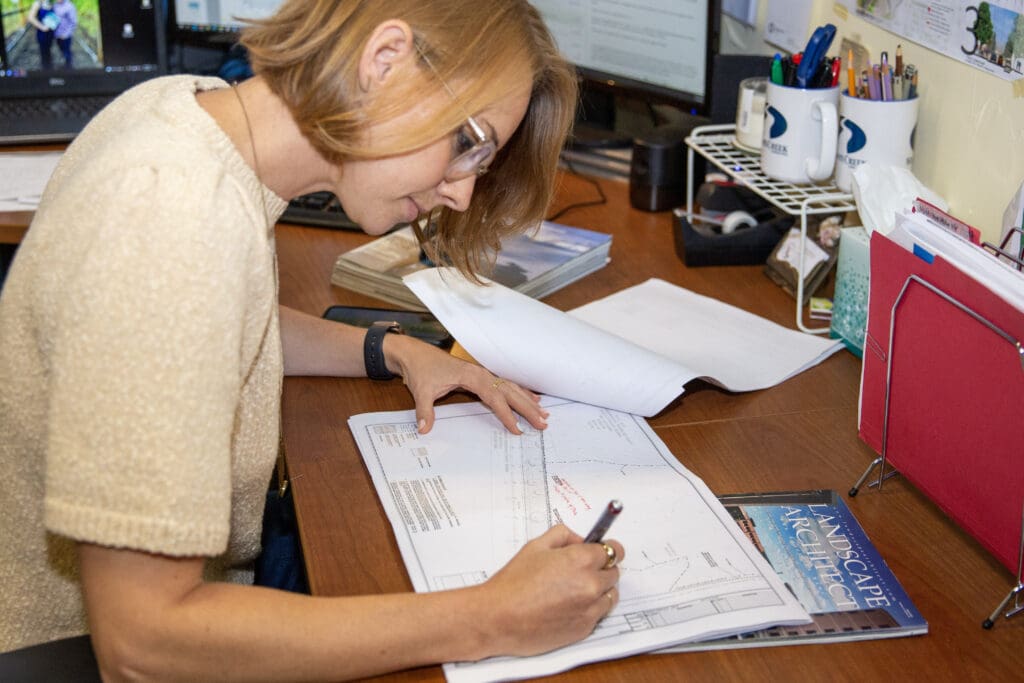
By working the opportunities and constraints analysis, our team can uncover the special qualities of a site and identify broader opportunities that create exciting transformations. Building off the analysis, a conceptual design is developed. This preliminary design is presented to the client and community to test ideas and receive additional feedback. Providing an illustrative plan helps make the vision more real and is typically refined based on community feedback and budget constraints.
With more comments and observations at hand, we continue refining the design, drawing site plans in CAD and further illustrating them using the latest in 3D software and visualization models for final client and team approval.
Creating community spaces
With each step in the design process, the plans become more refined and realistic. Our final plans are incredibly detailed and include all the specifications contractors will need for construction. Depending on the project, our clients will host groundbreaking ceremonies to celebrate with the community and share how public involvement has been incorporated.
“It’s important to continue the dialogue with community, to say “here’s how your feedback impacted and shaped this project.” Listening to residents is important and closing that communication loop helps build trust.”
Sarah Evans, PLA, ASLA
Every step of our landscape architecture projects includes multiple touch points to ensure we’re meeting client goals and delivering transformative results. To kickstart your next landscape architecture project in Indianapolis, Chicago, Charlotte, or beyond, contact our team.
